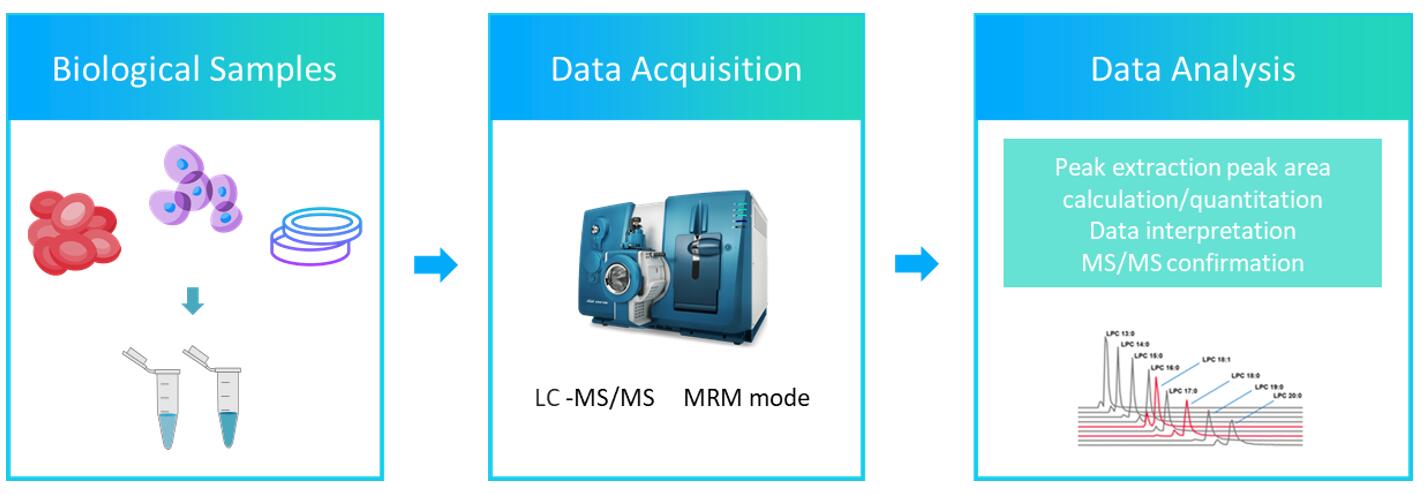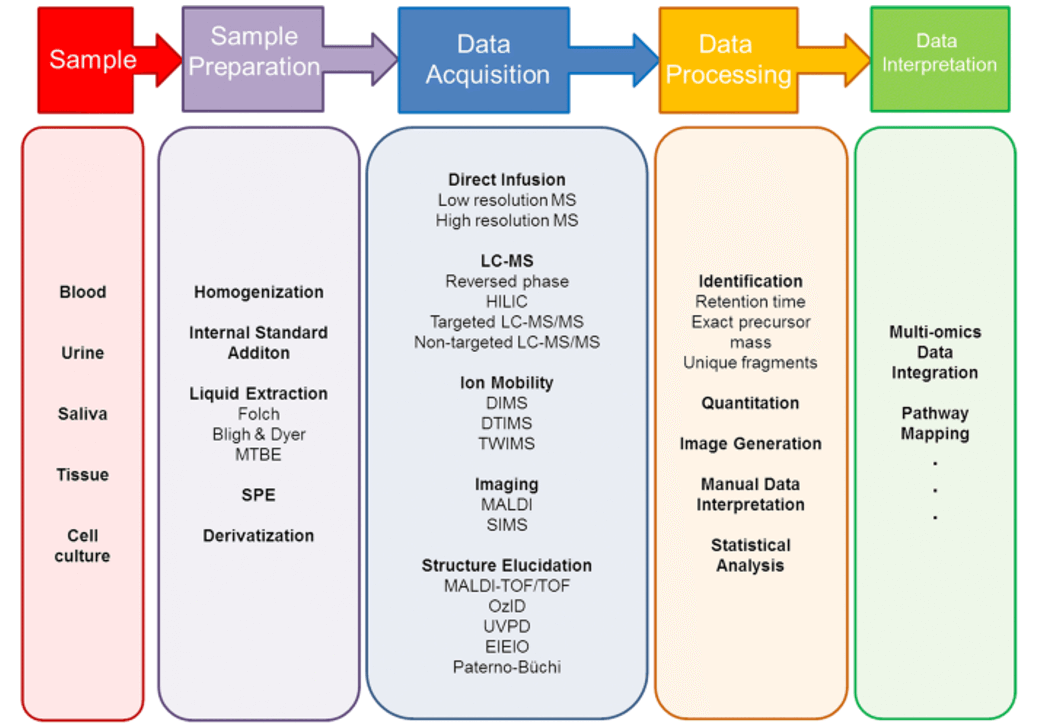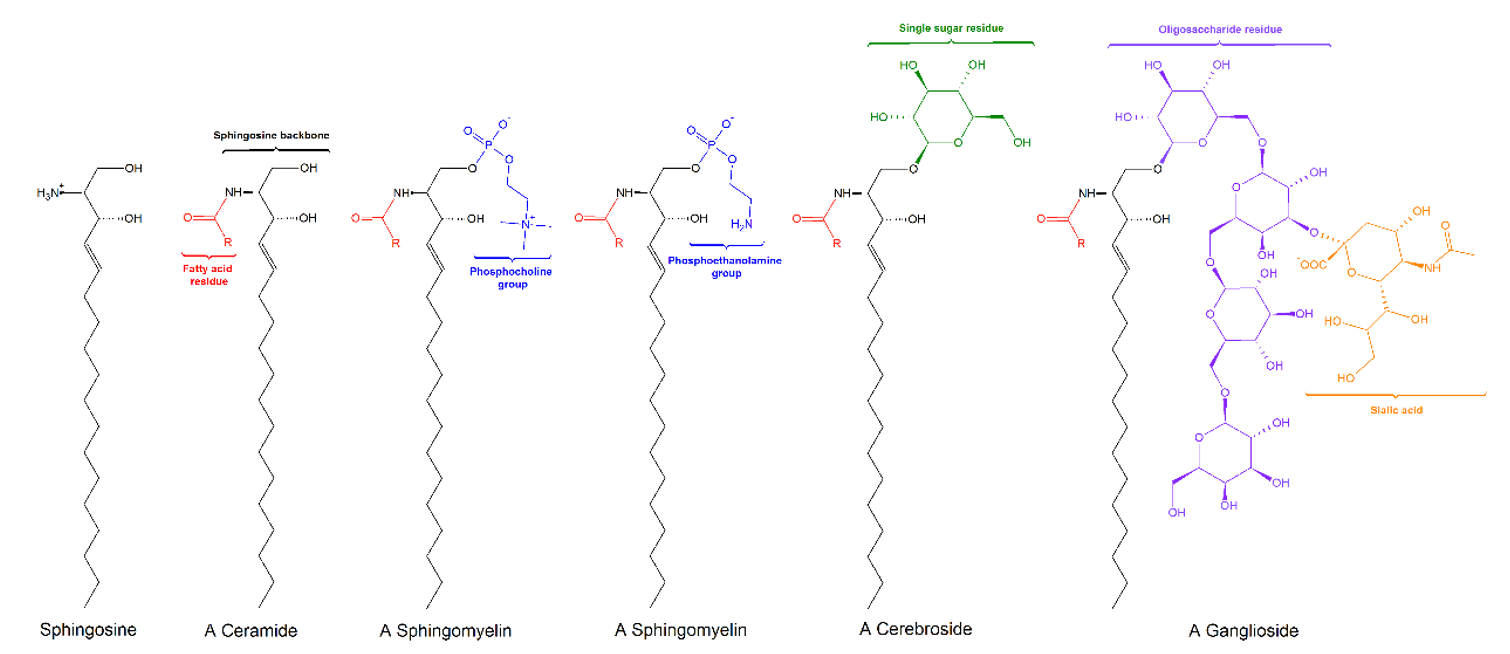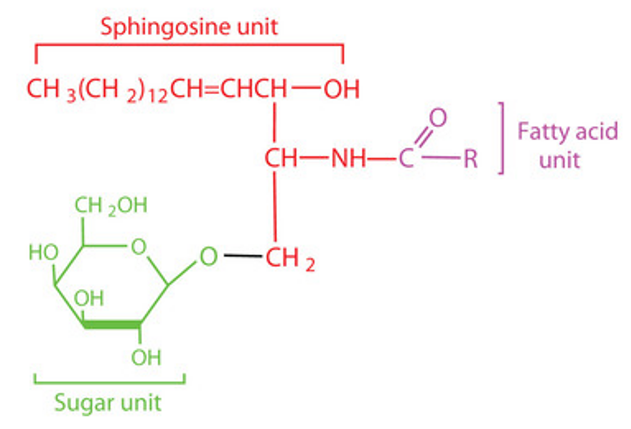Glycosphingolipid Analysis Service
Glycosphingolipids are formed by linking a ceramide backbone with one or more sugar groups, and mainly include a hydrophobic fatty chain and a hydrophilic sugar chain. It is convenient for it to be inserted into the lipid bilayer of the cell membrane while extending the polar end formed by the sugar chain to the outside of the cell plasma membrane, thereby becoming a sign of biological activity on the cell surface. According to the composition of sugar chains, glycosphingolipids can be divided into three categories: cerebroside containing only one sugar group, neutral glycosphingolipids without sialic acid, and acid glycosphingolipids containing sialic acid.
The composition, structure and distribution of glycosphingolipids have tissue specificity and specificity. Most of them exist in animal tissues, sponges and fungi as components of cell membranes. Although some plants also contain some glycosphingolipids, the overall distribution of glycosphingolipids in the plant kingdom is not universal.

The occurrence and development of diseases are often accompanied by the following two types of abnormalities in glycolipid: (1) Sugar chain structures that are missing in normal tissues appear; (2) Some sugar chain structures are higher in diseased tissues The expression and constitute an important disease-related antigen. The occurrence of these abnormal expressions of glycolipids may be the predisposing factors of certain diseases, and may also be caused by abnormal glucose and lipid metabolism after the occurrence of certain diseases. Therefore, analysis of glycosphingolipids has important value for disease research.
Creative Proteomcis is equipped with an LC-MS/MS system that can effectively analyze the high heterogeneity of sugar chain structure and its widespread isomers, realize glycosphingolipid metabolism, lipid raft-related pathways and quantitative analysis of glycosphingolipids.
Our Glycosphingolipid Analysis Service
Absolute quantification: Use external standard method to quantify, and use internal standard for correction, qualitative and quantitative is more accurate.
High sensitivity: We use liquid chromatography coupled with triple quadrupole mass spectrometers for glycosphingolipid analysis service (Triple Quad™ 6500 LC-MS/MS System).
 Fig 1. The workflow of glycosphingolipids analysis service.
Fig 1. The workflow of glycosphingolipids analysis service.
Our Detectable Glycosphingolipids Include But Are Not Limited To
Sample Preparation
We can accept a variety of sample types, including blood, tissue, cells, etc. If you want to provide other samples, please contact our technicians for specific sample sizes.
- Serum/plasma and other homogeneous liquid samples: ≥ 100ul/sample
- Animal tissue/feces related samples: ≥ 100mg/sample
- Cells/microorganisms: ≥ 10*7/sample
- Cell supernatant/culture medium supernatant ≥ 2mL
After quick freezing in liquid nitrogen, store at -80°C and send with dry ice.
Why Choose Us?
- One-stop analysis service: Provide comprehensive services from sample preparation, standard addition, mass spectrometry analysis, data processing, and data comparison.
- High sensitivity: High-sensitivity mass spectrometer is used to effectively detect low-level metabolites in the sample.
- Fast turnaround time: 1-4 weeks.
- Detailed report: Provide a detailed report at the end of the entire project, including the experimental process, MS/MS instrument parameters, quality control parameters, raw data and the final result of the comparison.
If you have any questions about our glycosphingolipids analysis services, please contact us.
* Our services can only be used for research purposes and Not for clinical use.
Services:
Resource:
Platform:



 Fig 1. The workflow of glycosphingolipids analysis service.
Fig 1. The workflow of glycosphingolipids analysis service.




